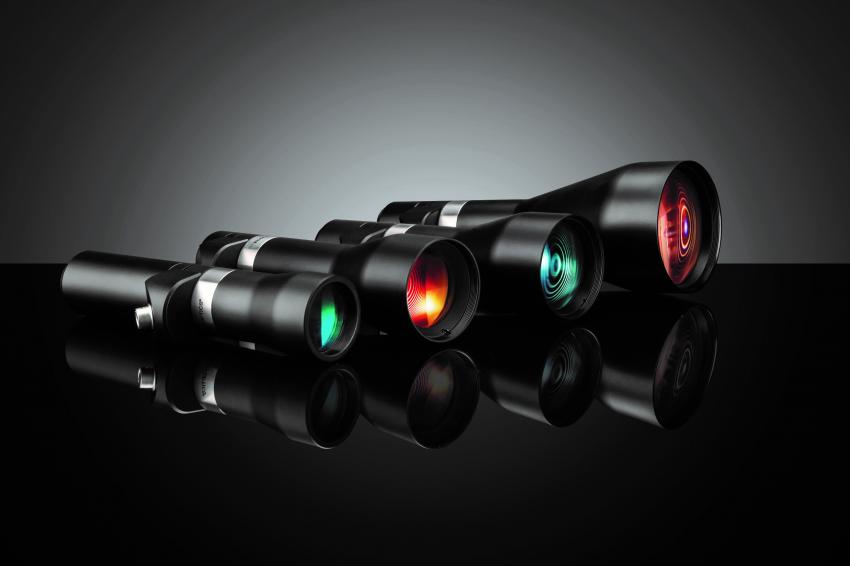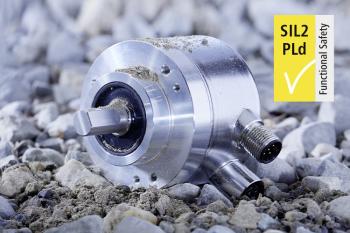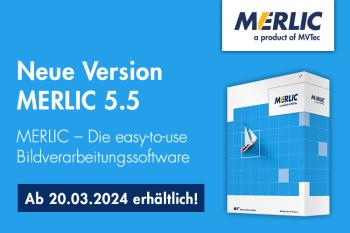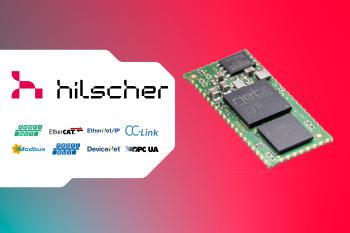Liquid Lens Telecentric Lenses Are a Combination of Two Technologies that Taps New Potentials
Telecentricity Meets Flexibility in Edmund Optics Products
The introduction of liquid lens telecentric lenses saves time and money, and applications that could hardly be realized before are now within reach. This article informs about telecentric and liquid lenses and highlights the benefits of a combination of both.
As technology advances rapidly, new products, developments and technologies are introduced to the market in order to achieve better results in all kinds of applications and regions. One of these new developments, and certainly an advancement for machine vision and telecentric applications, is the combination of telecentric lenses and liquid lenses. Telecentric lenses are in use whenever a high precision measurement is required in machine vision and industrial environments. However the utilization of telecentric lenses is typically limited to one object distance. In order to adapt to other object distances the lenses have to be manually focused or a complicated mechanical focusing mechanism has to be realised. If there are objects under inspection with different heights or in different object distances, using telecentric lenses is difficult and involves time-consuming developments.
Telecentric lenses
Telecentricity means the maintenance of the imaging lens magnification independent of the distance between object and lens. Telecentricity is achieved through the position of the iris in the telecentric lens design. There are three types of telecentricity: object space telecentricity, image space telecentricity and double sided telecentricity. For object space telecentric lenses the entrance pupil has to be at infinity, meaning the chief rays in object space are parallel to the optical axis and the magnification will not change even if the object distance changes. The front lens of this telecentric lens design has to be as big as the object under inspection in order to view the whole object. Object space telecentric lenses are a must if you need precise measurements in your imaging application. For image space telecentric lenses the exit pupil is at infinity, meaning the chief rays in image space are parallel to the optical axis. The image distance can be changed without changing the magnification which means you do not have to worry about the exact sensor position in your camera and the illumination on the sensor is more even. Double sided telecentric lenses offer fixed magnification in object and image space and therefore combine the benefits of object and image space telecentricity. It is important to note that telecentricity does not imply unlimited depth of field. Telecentric lenses also have their specific depth of field range according to the f/# of the lens. Although the magnification and telecentricity is maintained until infinity, the image becomes blurry outside of the depth of field range.
Telecentric lens vs. conventional lens
For conventional entocentric lenses the magnification changes with the distance between object and lens. The resulting image shows perspective or parallax error and is similar to the image of our eyes. The objects closer to our eyes appear bigger than objects that are further away, even if the objects have the exact same size. If you measure the size of objects at different distances in images taken with a conventional lens with parallax error, the measurement will not result in the exact object size. In order to measure the size of an object independent from the working distance a telecentric lens is required.
Liquid lenses
Liquid lenses consist of a housing filled with an optical fluid and sealed off with a membrane. The lenses can be electrically focused on different working distances and therefore provide a high versatility in different applications. If an electrical current is applied to the lens, it changes its shape. This leads to a change of optical power, focal length and working distance. Electrically operated liquid lenses can be focused to different objects in different working distances within milliseconds, providing high speed, repeatability and reliability in challenging industrial environments and therefore exceeding mechanical focusing mechanisms. Liquid lenses feature a very long lifetime of millions of cycles and can be used self-contained or integrated in optical assemblies or imaging lenses.
Integration of liquid lenses
As integration of liquid lenses in bigger optical assemblies is not always an easy task, manufacturers of machine vision imaging lenses often provide lenses where the liquid lens is already integrated in the optical design. This option saves the user a lot of development time and eliminates the need to consider optical parameters in order to find the right liquid lens and liquid lens position for the specific application. Liquid lenses are small and lightweight. The required space for integration is small as is the effect on size and weight of the industrial imaging lenses. Big mechanical focusing systems in space restricted industrial applications belong to the past. The electrical cable for changing the current of the lens is also small and can therefore be easily integrated in the assembly providing good accessibility to the liquid lens. So far liquid lenses were mainly integrated into C- and S-Mount fixed focal length lenses, but why not use a different approach and integrate them in telecentric lenses as well?
Combination of telecentricity and liquid lens technology
Integrating liquid lenses into telecentric lenses brings two main advantages:
- The telecentric lens provides accurate measurement in challenging applications without parallax or perspective error.
- The liquid lens provides very quick and smooth focusing on different objects and working distances.
By integrating the liquid lens, the high image quality is not changed and the telecentric lens can be used in a whole working distance range. This fact is for example very useful in inspection applications with objects at different distances under inspection. Refocusing to the new distance only takes a few milliseconds, the telecentricity and therefore the magnification is maintained. For telecentric measurement lenses especially the location of the entrance pupil is essential for telecentricity and should not be changed while refocusing with the liquid lens, meaning it is even more difficult to integrate liquid lenses into telecentric lenses than into fixed focal length lenses. Keeping this in mind users should consider to benefit from the optical design experience of imaging lens manufacturers and integrate complete assemblies with already integrated liquid lens in given applications. Liquid lens telecentric lenses are always only object space telecentric lenses, as the integration of the liquid lens either changes the entrance or the exit pupil location and draws it away from infinity. In order to maintain telecentricity in object space, the image space telecentricity is sacrificed.
New possibilities
The combination of telecentric lens and liquid lens technology brings new possibilities to all users who have to develop machine vision applications with high precision measurements, for example in industrial environments. The addition of the liquid lens brings unknown flexibility to telecentric applications and allows for quick focusing to different working distances while maintaining full telecentricity and highest image quality. Due to the low focusing time, the throughput of items under inspection can be increased, time and money can be saved. The size and installation space of the telecentric lens is only marginally increased by adding the liquid lens, so liquid lens telecentric lenses can easily be integrated into existing applications where quick depth of field adjustment is required. The use of liquid lens telecentric lenses simplifies not only inspection applications, but also gauging and precise placement, and it opens a wide range of possibilities for future applications and developments in all kinds of areas.







